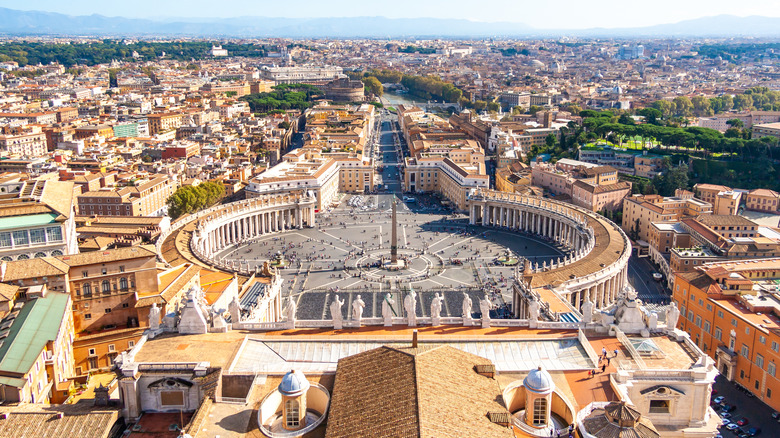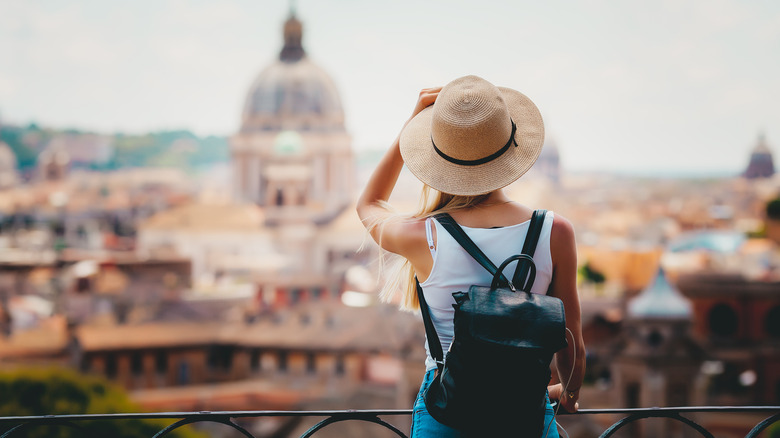How Many People Are Actually Citizens Of Vatican City?
On February 11, 1929, the Lateran Treaty established that the Vatican was no longer part of Italy but an independent city-state led by the Pope, Rome.us reports. Measuring 100 acres (0.44 square kilometers), the Vatican became the smallest country in the world.
Walking in the crowded Vatican streets means that people will see more tourists than locals. The country receives approximately 5 million visitors per year, 20,000 in a single summer day (via Reuters). In addition, every day nearly 2,500 Italians enter the city to work in museums and tour agencies. However, the Vatican only has 800 inhabitants, and only 450 people have Vatican citizenship, Vatican City Tours reports. Furthermore, its citizens were not born in the country, as there are no hospitals in the Vatican area.
Getting permission to live in the Vatican is almost impossible. It is a privilege given to the clergy and the Swiss Guards responsible for the pope's security since the 16th century. But what does living in the smallest country in the world look like?
Everyday life in Vatican City
As an independent country, Vatican City has its own stamps, license plates, and passports. The Holy See is responsible for the country's financial administration, and most of its income comes from tourism and donations, as there are no taxes to import or export products (via Tax Fitness).
The Vatican is separated from Rome by a wall, and the gates are closed every evening. The pope's security is a priority, and there are 300 cameras in the country. Living in the Vatican means that a person can see the pope quite often. "We see each other when (Pope) Francis drives by in a car for meetings and audiences at the Apostolic Palace and when he is coming back from his journeys. Strolling in the Vatican Gardens, my daughters and I can come across Pope Benedict," said Magdalena Wolinska-Riedi, a Polish journalist who is married to a Swiss Guard and who lives in the country (via Aleteia).
Like many other religious places, inhabitants cannot walk in the Vatican wearing short clothes or bare shoulders. "We cannot be too loud late in the evening or throw big parties where guests dance and sing until the wee hours. We are at home, but at the same time, we are within ancient walls, in the shadow of the Apostolic Palace," Wolinska-Riedi explains.

